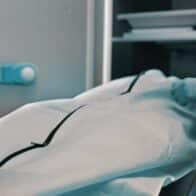Bedsores, also called pressure ulcers, are classified into four stages depending on how severe they are: Stage 1, Stage 2, Stage 3, and Stage 4. Medical professionals can now classify a wound objectively thanks to the specific features clearly explained by the National Pressure Ulcer Advisory Panel.
Table of Contents
Toggle
Stage 1 Bedsores
Deemed the mildest form of bedsore, Stage 1 pressure ulcers are usually painful but do not lead to broken skin. Patients with Stage 1 bedsores may develop reddened skin in the affected area. Those with darker skin may develop spots that are of a different color than their normal skin tones. The texture of the affected area may also be either firmer or softer compared to the surrounding normal skin. Stage 1 sores are often on the surface and disappear soon after pressure is eased.
Stage 2 Bedsores
At this stage, the patient has already lost some skin, either on the skin’s outermost layer (epidermis) or the skin’s deeper layer (dermis). Sometimes, the skin loss can be in both layers of the skin. The sore is now an open wound that resembles a cut or a blister. The tissues around the afflicted area exhibit purple or red discoloration. If diagnosed and treated on time, these sores often heal relatively fast.
Stage 3 Bedsores
Pressure ulcers that have advanced to the third stage have fully penetrated through the first two skin layers and deep into the fatty tissue under the two layers. A Stage 3 sore looks like a crater and smells bad. Other characteristics of sores in this stage include redness, pus, and discolored drainage.
Stage 4 Bedsores
Considered the most serious type of bedsores, Stage 4 ulcers will form deep craters that afflict the muscle and can even expose a patient’s bone. Stage 4 bedsores can severely harm the tissues, tendons, and even joints of the patient.
Sometimes, a pressure ulcer can be classified as ‘unstageable’. Unstageable ulcers are often called extremely advanced wounds, especially when the skin, muscles, and bones have been affected.
Bedsores can easily be prevented by turning bed bound patients, however, they can develop into a serious, life-threatening condition. Regardless of the stage of the ulcer, these wounds show a sign of possible neglect inside an assisted living facility or a nursing home. A person whose loved one has developed any of the aforementioned bedsore stages should notify the nursing home right away. A personal injury lawyer can help victims determine if they have grounds for a nursing home negligence claim.





